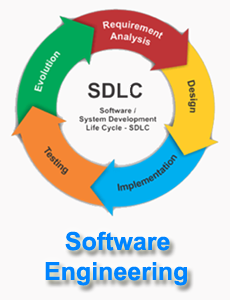What is SDLC
What is Software Development Life Cycle
A software life cycle model (also termed process model) is a pictorial and diagrammatic representation of the software life cycle. A life cycle model represents all the methods required to make a software product transit through its life cycle stages. SDLC Cycle represents the process of developing software. SDLC framework includes the following step;

Why SDLC?
Here are the best reasons why SDLC is vital for developing a software system.
- It gives a reason for project outlining, scheduling, and budgeting.
- It gives a framework for a conventional set of projects and deliverables.
- It is the best way for project tracking and administration.
- It increases the visibility of project planning to all associated stakeholders thereby helping in the expansion process.
- It helps boost the development speed.
- It also improves client relations.
- It helps you to reduce project risk and project administration plan overhead.
SDLC stand for software development life cycle. SDLC is a special aproach used to design efficient software application. SDLC mainly contains following stages.
- Requirment gathering
- Feasibility study & Analysis
- Designing
- Coding and Implimentation
- Testing
- Installation/Deployment
- Maintenance
Before designing a real time software application client always look for the problems which may occured in appkication which is given by client this is technique known as feasibility study.
Requirment gathering: The requirement is the first stage in the SDLC process. It is conducted by the senior team members with inputs from all the stakeholders and domain experts in the industry. Requirements Gathering stage need teams to get detailed and precise requirements. This helps companies to finalize the necessary timeline to finish the work of that system.
Feasibility study & Analysis: Once the requirement analysis phase is completed the next sdlc step is to define and document software needs. This process conducted with the help of 'Software Requirement Specification' document also known as 'SRS' document. It includes everything which should be designed and developed during the project life cycle. Feasibility study have mainly five types, they are; Economic, Legal, Operation feasibility, Technical, Schedule.
Designing: In Designing phase, the system and software design documents are prepared as per the requirement specification document. This helps define overall system architecture.
Coding and implimentation: Once the system design phase is over, the next phase is coding. In this phase, developers start build the entire system by writing code using the chosen programming language. In the coding phase, tasks are divided into units or modules and assigned to the various developers. It is the longest phase of the Software Development Life Cycle process.
Testing: Once the software is complete, and it is deployed in the testing environment. The testing team starts testing the functionality of the entire system. This is done to verify that the entire application works according to the customer requirement.
Installation/Deployment: Once the software testing phase is over and no bugs or errors left in the system then the final deployment process starts. Based on the feedback given by the project manager, the final software is released and checked for deployment issues if any.
Maintenance: Once the system is deployed, and customers start using the developed system, following 3 activities occur
- Bug fixing: bugs are reported because of some scenarios which are not tested at all
- Upgrade: Upgrading the application to the newer versions of the Software
- Enhancement: Adding some new features into the existing software

